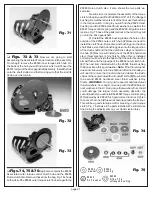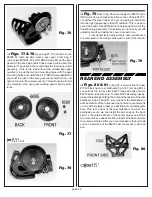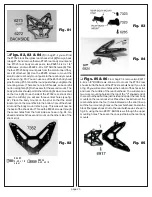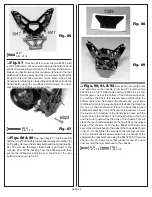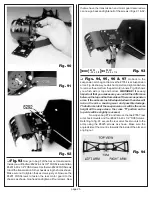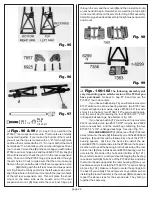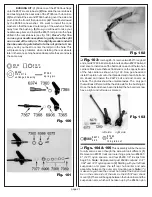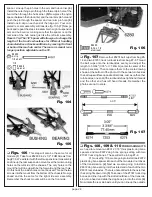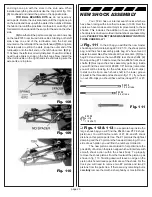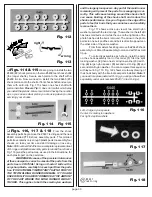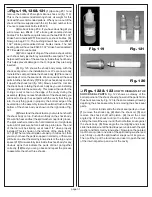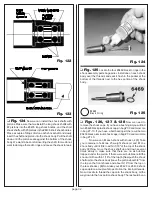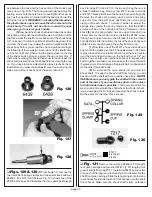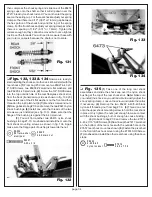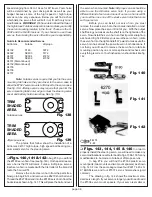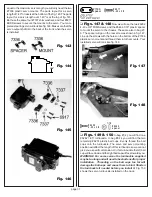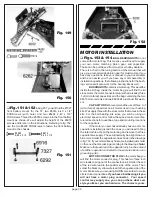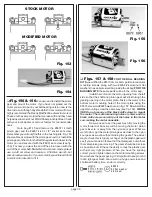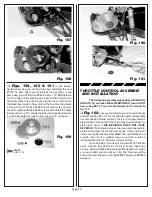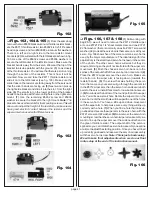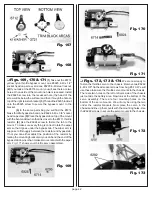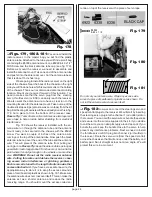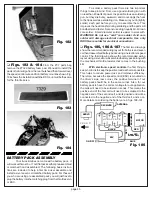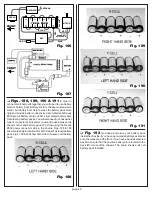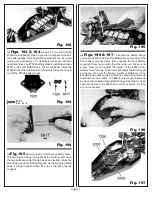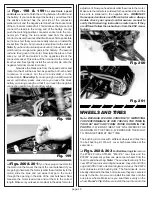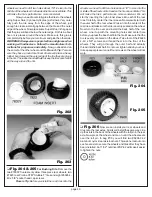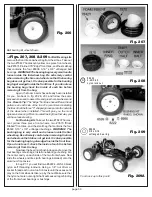
page 35
Fig. 135
❏
Fig. 136
(1) Take one of the front shocks and slide
the shock cap over the upper shock bushing on the front
shock strut. (2) From bag #7-10 remove two #6222 4-40/5-
40 black self thread nylon locknuts. (3) Thread the #6222 nut
onto the shock mounting screw to hold the shock cap in
place. Only tighten the nuts just enough to make contact with
the shock bushings, but not enough to cause binding.
(4) Go back to bag #7-10 and take out the two #7874
4-40 x 7/16" SHCScrews. (5) Now line up the pivot ball on the
bottom of the shock with the outside shock mounting hole on
the front suspension arm. Make sure the pivot ball is on the
front side of the front arm mount. (6) Fasten the shock pivot
to the arm with the #7874 SHCScrew. (7) Now do the same
for the other front shock. Be careful not to overtighten the
screws which can cause shock binding. Most drivers prefer
to install their shocks with the spring clamp adjusting screws
on the outside, facing forward, to make adjustment easier.
# 78 74
4 -4 0 x 7 /1 6
#62 22
4-4 0/5-40
ny lo n lock nu t
Fig. 136
❏
Fig. 137
This photo shows all four shocks installed
onto the truck. We have now completed the chassis assem-
bly.
Fig. 137
STEERING SERVO SECTION
We are now ready to install the steering servo. If you
have not purchased a radio yet, we recommend that you stay
with a name brand company like Airtronics, Futaba, or
JRpropo. However, it may be possible to use many other
radios, including some stick models. This is something we
recommend you determine before you purchase the radio
system or you will need a written guarantee from the dealer
that they will take it back if it will not work or fit correctly.
Because of the additional loads on the steering
system (wider and heavier tires) we recommend using only
medium sized servos with a minimum of 42 oz. in. of torque
for the steering servo. Most quality radio systems come with
medium sized servos that have torque ratings in the low 40’s,
but check the specifications just to be sure.
Racers Tip: If
you want your truck to be able to perform a little better and
more consistently, most racers look for a ball bearing servo.
When used for their steering servo, they prefer a servo that
has at least 55 oz. in. of torque.
The speed of the servo will depend upon your
preference. Standard servos have speeds normally between
.22 to .24 sec. for 60° of travel. High speed servos have

